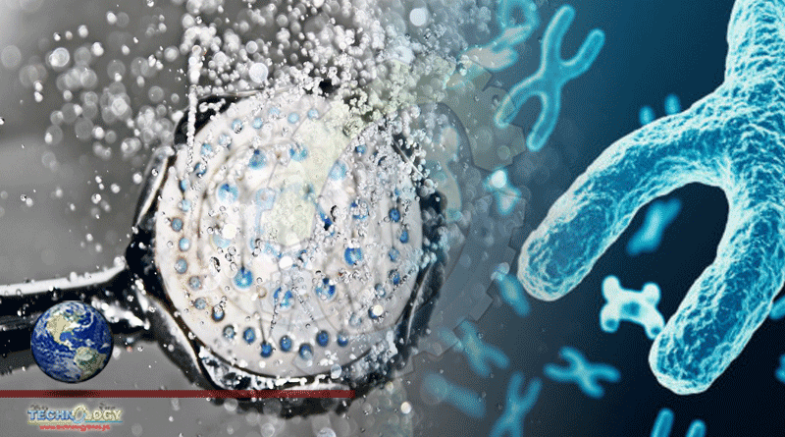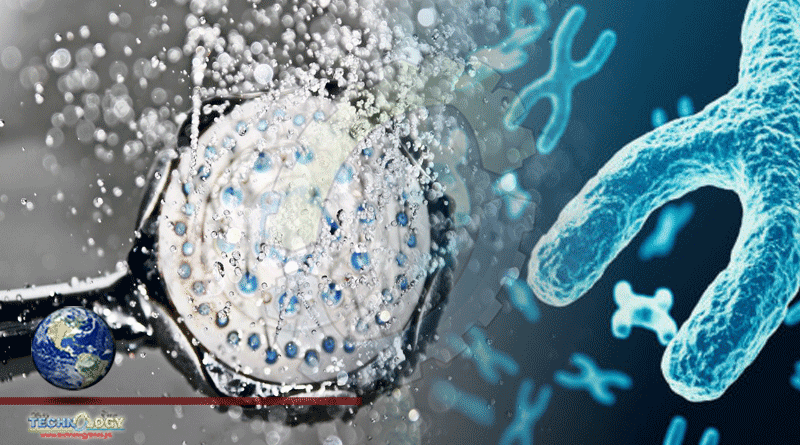Here Are Two Poorly Understood Frontiers Of Biology Waiting For Id Pioneers. Why Should The Darwinists Invade These Territories

When scientific journals speak of biological topics that are poorly understood, the ears of design advocates should perk up, especially when they involve systems that work. Here are two examples. These two poorly understood fields are as close as our skin and the ground we stand on.
The Soil Microbiome
The ground is alive! A web of organisms as complex as a rainforest lives under our feet in soil. “Spare a thought for the teeming ecosystem beneath your feet,” encourages Elizabeth Pennisi in Science. A mix of organic material, minerals, gases and other components, soil is home to some 40 percent of earth’s animals, writes Pennisi. A graphic in the article shows organisms ranging five orders of magnitude in size. Scientists have tended to focus on the largest and smallest of these living creatures, she notes: the moles and ants on the large end, and the microbes on the small end. In between, however, there is a middle earth of players that is ripe for investigation.
The roles of every one of these critters are essential to the biosphere. One soil ecologist says, “Without soil organisms and the activities they carry out, it would be impossible for other organisms to survive.” Soil organisms break down organic matter and pollutants, contribute to plant growth and diversity, and “can serve as a nearly inexhaustible sink for carbon.” Cyanobacteria build biocrusts from soil, found often in deserts, that become the first pioneers of complex ecosystems. Lichens colonize solid rock on which mosses and liverworts can grow, followed by herbaceous plants and trees.
Last month, Japanese scientists were thrilled to recover a capsule from their Hayabusa-2 spacecraft to asteroid Ryugu (BBC, Phys.org). It was the first sample-return mission to bring gases and significant quantities of solid material from an asteroid. The appearance of the material through the glass windows looked like soil, but nothing would grow in such material, because the material is dead. The moon and Mars have regolith that looks superficially like soil, but that is merely rock pulverized by impacts. An ecologist in Pennisi’s article quipped, “You just can’t have a Mars-like soil and expect to maintain the food supply and forests.” In the 2015 hit movie The Martian, the protagonist realized he had to fertilize the “soil” with organic matter (his own) to get his remaining potato rations to grow more potatoes.
The fact that soils are so productive on Earth, supporting abundant forests and crops, should trigger thoughts of foresight and design among scientists looking beyond Darwinian happenstance. ID researchers might even find evidence of irreducible complexity. Other design factors worth researching include transport mechanisms for microorganisms and meso-organisms: pioneering life forms that traverse the globe on particles of dust or sand gliding in the clouds or traveling the oceans on rafts of vegetation. Some spiders engage in “ballooning” with strands of web that carry them aloft for many miles. Birds might serve as aircraft for insects and mites. These transport mechanisms can turn a newborn volcanic island like Surtsey into a thriving ecosystem within a few years and transform a devastated zone like the one around Mt. St. Helens into a forest within a few decades.
The Skin Microbiome
This biological frontier is really close to home. In Nature, Michael Eisenstein bids readers consider the vast ecosystem living on our skin. “The skin supports a diverse community of microorganisms that train and support the immune system, and fend off pathogenic threats,” he states as introduction. And yet the skin microbiome “remains poorly understood” — even less explored than the gut microbiome, despite its being “easily accessible.” One might think skin, made to be impenetrable to most germs, to be an inhospitable place for organisms, like a vast desert. A four-minute animated video in the article portrays skin as a war zone: good bacteria fighting off pathogens with ground-to-air missiles, setting up defense zones, and even stimulating the creation of their own forts. When this ecosystem is in balance, skin is kept healthy and clean. One researcher tested the balance of the normal skin microbiome in an unusual way. Medical Xpress tells how public health lecturer James Hamblin at Yale decided to go without showers — for five years! Surprisingly, his skin microbiome stabilized in a way that did not repulse his wife and friends. The expected rancid body odor actually went away in time.
From his experience, which he has published in a book, Clean: The New Science of Skin and the Beauty of Doing Less, he concluded that the deodorants, shampoos, and oils that we feel are necessary for hygiene don’t remove microbes; they just change the populations. Scrubbing with antibacterial soaps can possibly remove the very microbes that we need for a good immune system. The Amish, he points out, tend to have low rates of allergies and inflammation possibly due to their exposure to dirt and farm animals from childhood. Edward Jenner, similarly, reasoned that farm women had immunity to smallpox due to their contact with weaker forms of a similar cowpox virus they picked up by milking cows. One can be “too clean,” Hamblin concludes. After all, most people through history did fine without all those highly-marketed soaps and cleansers. “The theory is these microbial populations on your skin change and eventually establish a healthy equilibrium.” In the Nature article, Eisenstein offers a concurring thought. Those microbes are not idle stowaways; they are crew members.
Agriculture and Human Health
Here are two poorly understood frontiers of biology waiting for ID pioneers. Why should the Darwinists invade these territories with their mindset focused on chance? The fact that soil and skin microbiomes work very well most of the time indicates that they were designed to work optimally when all the parts are in balance. Instead of viewing microbes and all the other members of these ecosystems as selfish opportunists, ID scientists could approach them as parts of irreducibly complex systems that interface with geophysical factors to ensure a thriving biosphere. Discoveries made by ID research could have profound applications to agriculture and human health.
This news was originally published at Evolution New’s
